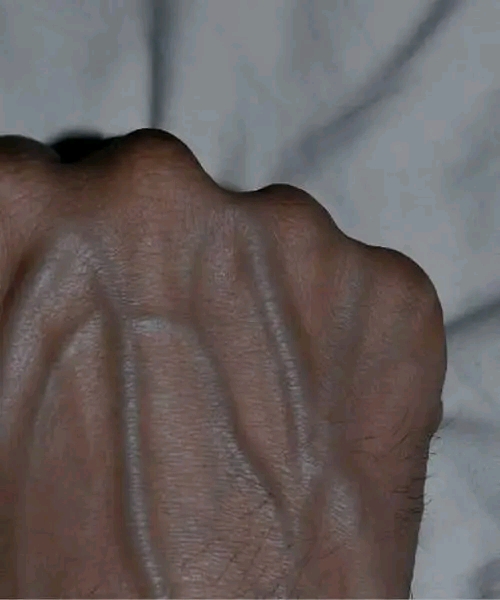Certainly! Here’s a complete, structured article titled:
Introduction
Visible veins can be completely normal — especially after exercise, during hot weather, or as part of natural aging. But in some cases, prominent veins can signal underlying health conditions that need attention. Understanding when visible veins are harmless and when they might indicate a medical issue is key to staying proactive about your vascular health.
Origin and Cultural Significance
Veins have long been associated with health, strength, and even beauty across cultures. In classical art, muscular bodies with prominent veins were seen as a symbol of vitality. In modern fitness culture, “vascularity” is often prized as a sign of low body fat and peak physical conditioning. However, not all visible veins are purely cosmetic or fitness-related — sometimes, they reflect deeper health concerns.
Ingredients Quantity (i.e., Contributing Factors)
Several factors influence the appearance of veins, including:
- Genetics – Some people naturally have more visible veins
- Body Fat Percentage – Less fat = more visible veins
- Aging – Skin becomes thinner, revealing veins
- Activity Level – Exercise increases blood flow and vascular visibility
- Hydration & Temperature – Heat and dehydration can cause veins to expand temporarily
Optional Additions (Other Contributing Symptoms to Watch For)
- Swelling or heaviness in the legs
- Discoloration around the veins
- Cramping or aching
- Itching or skin changes
- Fatigue or tingling in limbs
Tips for Success (When Monitoring Vein Health)
- Take note of sudden changes in vein appearance
- Monitor for pain, swelling, or skin changes
- Elevate your legs after long periods of standing
- Wear compression socks if recommended
- Stay hydrated and active
- Don’t ignore symptoms that persist or worsen
Instructions (What to Do If You Notice Visible Veins)
- Observe: Are the veins new or have they always been visible?
- Evaluate Symptoms: Is there pain, swelling, or skin discoloration?
- Review Risk Factors: Consider family history, pregnancy, or prolonged standing.
- Apply At-Home Care: Use cold compresses, leg elevation, or compression wear.
- Seek Medical Advice: If veins are bulging, painful, or increasing rapidly, see a doctor.
Description (Of the 5 Health Conditions That Cause Visible Veins)
1. Varicose Veins
Swollen, twisted veins — usually in the legs — caused by faulty valves. Common in older adults and those who stand for long periods.
Symptoms: Aching, itching, bulging appearance.
When to Worry: If painful, tender, or associated with skin ulcers.
2. Deep Vein Thrombosis (DVT)
A blood clot in a deep vein, often in the leg. Can be life-threatening if untreated.
Symptoms: Sudden swelling, warmth, pain, and visible surface veins.
When to Worry: Immediately — DVT requires emergency treatment.
3. Chronic Venous Insufficiency
A condition where veins can’t pump blood back to the heart efficiently.
Symptoms: Visible veins, swelling, aching, skin discoloration.
When to Worry: If symptoms persist or worsen — it can lead to ulcers.
4. Phlebitis (Vein Inflammation)
Inflammation of a vein, often due to trauma or infection.
Symptoms: Redness, tenderness, visible vein path.
When to Worry: If accompanied by fever, pus, or increasing pain.
5. Peripheral Vascular Disease (PVD)
Reduced blood flow to limbs due to narrowed arteries or veins.
Symptoms: Cramping, weakness, visible veins due to poor circulation.
When to Worry: If walking becomes painful or skin begins to break down.
Nutritional Information (Supporting Vein Health Through Diet)
- Vitamin C – Promotes collagen for vein wall strength
- Vitamin E – Improves circulation and prevents clotting
- Bioflavonoids – Found in citrus and berries; support capillary health
- Omega-3s – Reduce inflammation and support blood flow
- Hydration – Keeps blood volume stable and reduces vein pressure
Conclusion
Visible veins aren’t always cause for concern — many are harmless and related to lifestyle or aging. But when they appear suddenly or come with symptoms like pain, swelling, or skin changes, they can point to underlying vascular conditions. Early awareness and action are key.
Recommendation
If you notice changes in your veins, don’t self-diagnose. Track symptoms, make healthy lifestyle choices, and consult a healthcare professional if anything feels off. Many vein conditions are manageable — or even preventable — with the right care.
Embracing Healthful Indulgence
Your veins tell a story about your health — listen to them. Rather than ignoring visible changes, view them as cues to deepen your understanding of your body. With a balanced approach that includes self-care, nutritious eating, and timely medical attention, you can honor both appearance and health in tandem.

